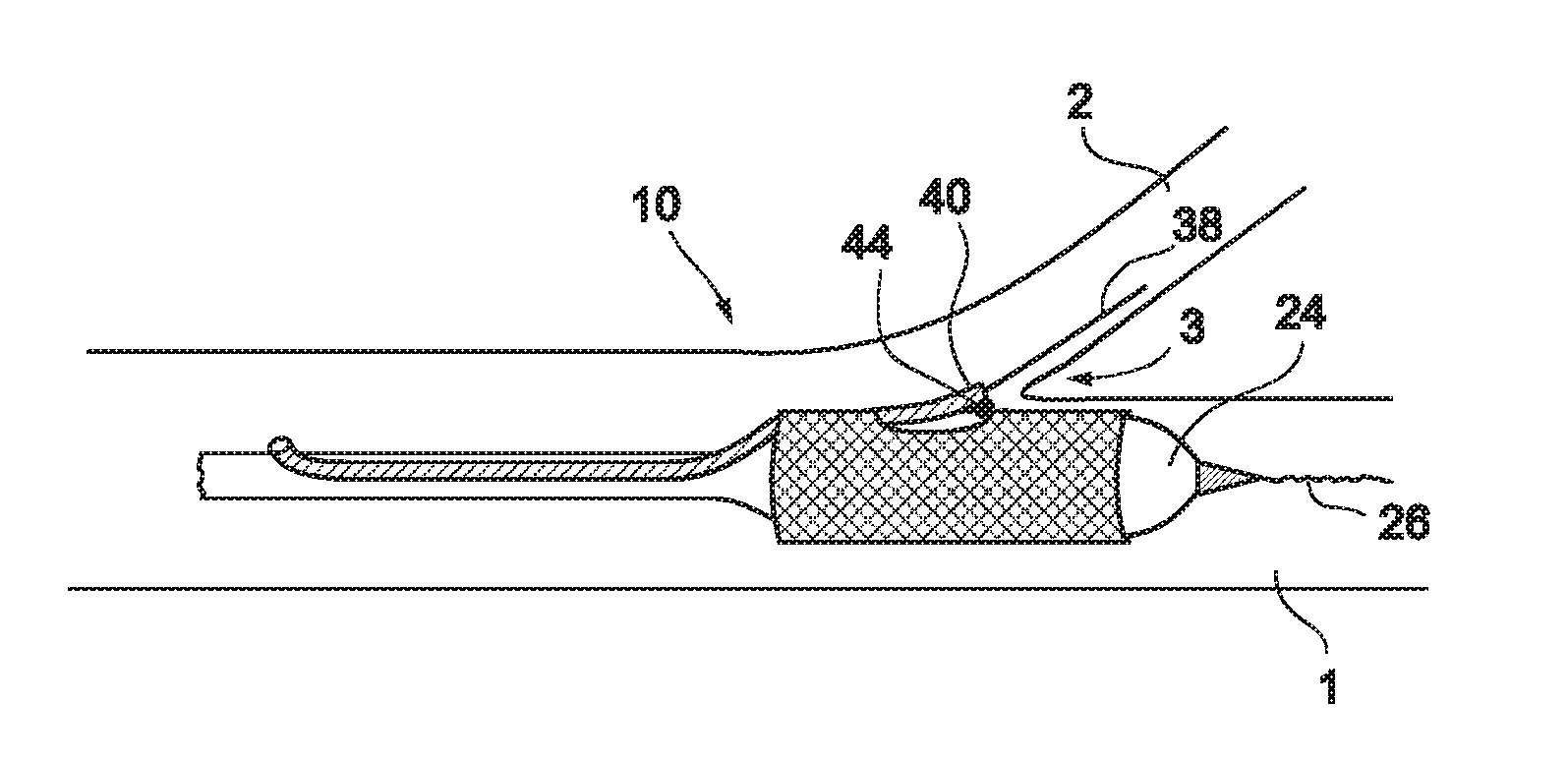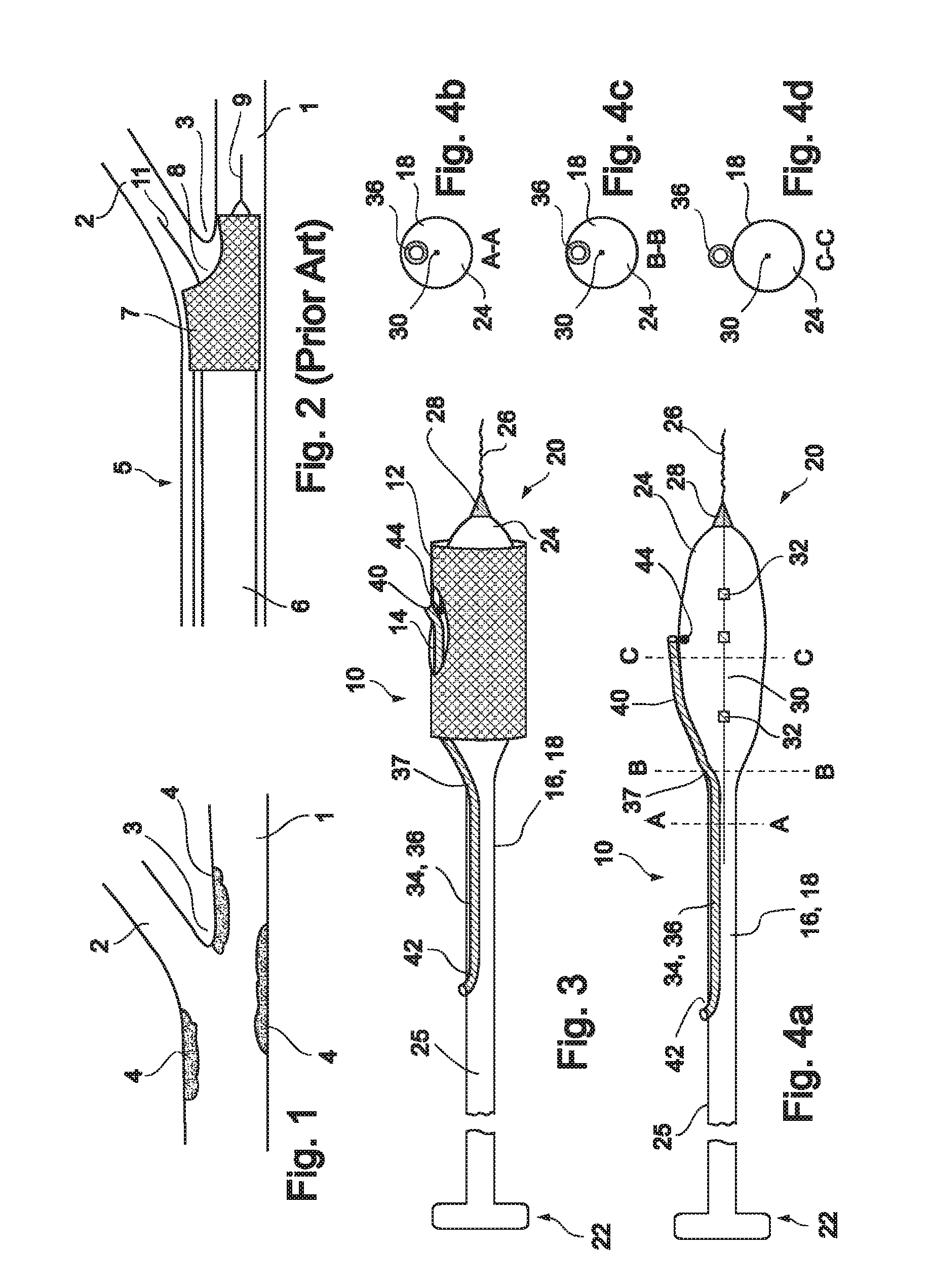Vessel treatment devices
a treatment device and valve technology, applied in the field of valve treatment devices and methods, can solve the problems of difficult operation and access to the site, inaccurate positioning within the vessel, and difficult to perform multiple insertions and retractions
- Summary
- Abstract
- Description
- Claims
- Application Information
AI Technical Summary
Benefits of technology
Problems solved by technology
Method used
Image
Examples
first embodiment
[0065] In a first embodiment, a stent delivery system 10 is designed to be delivered at a Type 1, Type 2 or Type 4 bifurcation lesion, as illustrated in FIGS. 29a, 29b and 29d, respectively. In these types of bifurcation lesions, the plaque 4 is at least partially located within the main vessel in the vicinity of bifurcation point 3, and may also be located within branch vessel 2.
[0066] Reference is now made to FIG. 3 and FIGS. 4a-d, which are illustrations of a bifurcation stent delivery system 10, shown with and without a stent respectively. System 10 includes a main elongated element 16, and an auxiliary elongated element 34 aligned with main elongated element 16. In a preferred embodiment, auxiliary elongated element 34 is positioned within main elongated element 16 proximal to an exit point 37 and alongside main elongated element 16 distal to exit point 37, as depicted in FIG. 3. In an alternative embodiment, auxiliary elongated element 34 is positioned alongside main elongated...
second embodiment
[0086] In a second embodiment, a stent delivery system 110 is designed to be delivered at a Type 4A or 4B bifurcation lesion as illustrated in FIGS. 29e and 29f. In a Type 4A lesion, plaque 4 is located in branch vessel 2, at or near bifurcation 3. In a Type 4B lesion, plaque 4 is located in main vessel 1 distal to the point of bifurcation 3. One example of such a location is the coronary artery, where blockage of, for example, the left anterior descending (LAD) artery is to be avoided while providing coverage to the plaque within the coronary artery. Other examples include renal arteries, the left main coronary artery, vein grafts, and others.
[0087] Reference is now made to FIGS. 11a-c, which are illustrations of different embodiments of a system 110 for delivery of a stent at a Type 4A or Type 4B bifurcation lesion. System 110 may be designed with a fixed wire, as shown in FIG. 11a, as on over-the-wire system, as shown in FIG. 11b, or as a rapid exchange system, as shown in FIG. 1...
PUM
 Login to View More
Login to View More Abstract
Description
Claims
Application Information
 Login to View More
Login to View More - R&D
- Intellectual Property
- Life Sciences
- Materials
- Tech Scout
- Unparalleled Data Quality
- Higher Quality Content
- 60% Fewer Hallucinations
Browse by: Latest US Patents, China's latest patents, Technical Efficacy Thesaurus, Application Domain, Technology Topic, Popular Technical Reports.
© 2025 PatSnap. All rights reserved.Legal|Privacy policy|Modern Slavery Act Transparency Statement|Sitemap|About US| Contact US: help@patsnap.com



